Soft roofing made of roll materials (without fusing)
Most of the materials for soft roofing are produced in rolls. They are intended for flat or pitched roofs, but with a low slope - up to 30 °. Roll roofing materials are rarely installed on pitched roofs with a slope of more than 15 ° - under their own weight they slide off the slope. They have a low cost, are easy to install, modern materials allow them to be used without repair for 10-25 years. This is the warranty period given by manufacturers for materials. But how long the roll roofing will be in use depends largely on how well it is made. Even the best materials will not save you if you perform poorly. Therefore, many owners of summer cottages or private houses prefer to do everything on their own, with their own hands. Let's talk about the main points of the roll roofing device with mechanical fastening (on nails and screws) or using mastic and let's talk further.
The width of roll roofing materials is standard - 1 meter, the length of the roll can vary significantly - from 7 to 20 meters, the characteristics vary in even wider ranges. So, in order to choose a material for a roll roof, you need to understand the types.
The content of the article
Classification by type of basis
The choice of roll material for a soft roof should be started by clarifying its basis. They are:
- Baseless. These are materials from recycled rubber (Isol) or bitumen (Brizol). There is a new material based on butyl rubber (Hydrobutyl). They are obtained by rolling the crushed raw material through rolls that form a sheet. Most of the materials are 2 mm thick. They are mainly used in the lower layers of the roofing cake for waterproofing the base.
- Based on roofing board impregnated with bitumen, sprinkled with mineral powder. The advantage of this material is its low price, the disadvantage is its short service life, poor tolerance to temperature changes. It crumbles at -15 ° C and poi + 50 ° C, which greatly narrows the scope of these materials. Today, roofing material is mainly used for outbuildings, and that is not always the case.
- Based on woven and non-woven fiberglass, polyester. The most expensive roll roofing materials are made on the basis of polyester. They have excellent properties: they have high tensile strength, they can stretch by 30% without loss of integrity, they can also be operated in a wide temperature range. On the basis of fiberglass, a durable but inelastic material is obtained. When the roof moves, it can come off the base, but it breaks in rare cases. Non-woven fiberglass - the basis is inelastic and fragile, but the materials based on it make auxiliary, lining.
The best and most durable materials for roll roofing are based on polyester. Their service life is 15-25 years. They are expensive, therefore they are usually used as an upper - roofing - coating, and the lower, lining layers are made from a material that is cheaper, usually based on fiberglass or base materials (as a waterproofing coating).
The device of a soft roof made of deposited materials is described here.
Binder types
The base of the roll roofing material is coated on both sides with an astringent protective compound. This could be:
- bitumen (Hydroizol based on asbestos paper, Glass roofing material);
- tar, bitumen-tar compositions;
- rubber-bitumen composition (Stekloizol)
- rubber-polymer;
- polymeric.
The best characteristics are for rubber-bitumen and polymer-bitumen compositions. Some of them are designed for operation in severe frosts - up to -40 ° C, some of them tolerate high temperatures well - up to + 150 ° C.
For regions with high temperatures, there are foil-based roll roofing materials - Folgoizol. A bitumen-rubber or bitumen-polymer binder is applied to the foil from the bottom side. Due to the reflective properties of the foil, the roof temperature will be 20 ° C lower. The front surface can be painted with weather-resistant paints and varnishes. Folgoizol bends well, is cut, nailed with roofing nails. There are roofing (FC) and waterproofing (FG).
Appointment
Roll roofing rarely consists of a single layer. Depending on the slope and the complexity of the structure, from two to five layers are laid. The lower ones are used for waterproofing, retaining heat and improving sound insulation. They are called "lining", in the marking they are indicated by the letter "P" (the letter that reflects the purpose of the material is in second place).
The top layer should be more durable, it bears the main mechanical load, climatic and natural factors affect. The most expensive materials are used for this layer. They are called "roofing" and are designated by the letter "K".
The installation procedure for soft bituminous shingles is described here.
Types of protective coating
The binders used in the production of roll roofing materials require protection from the effects of weather factors. Spreads of varying degrees of grinding are used as a protective layer:
- coarse-grained (K);
- fine-grained (M);
- dusty (P);
- scaly (H);
- special resistant to alkalis or acids.
In the marking, the letter indicating the type of sprinkling is worth the third. Roll materials used for lining are sprinkled on both sides with a fine-grained or dusty powder. Its task is to prevent it from sticking together in a roll.
On the back side of the roofing roll material, fine-grained or dust-like crumbs are also applied, and on the front side - coarse-grained or flake, which not only protects the coating, but also makes it look more attractive. To give an even more aesthetic look, the sprinkles are painted in different colors. These are usually red, gray, burgundy, brown, green and blue.
Installation method
Most of the materials for roll roofing are fused onto the base. For this, special burners are used, connected to cylinders with liquefied gas. With their help, the lower layer of the binder is melted, adhering to the base or already laid material. This technology is used on flat roofs covered with reinforced concrete slabs (for example, in garages).
In private housing construction, flat roofs are very rare in our country. On small houses, this is usually a gable roof, less often a gable roof. The rafter system and lathing of these roofs are wooden, the use of open fire on them is a big risk and the owners of summer cottages or small houses are looking for a roll roof that does not need to be welded. There are also such materials. Some of them are fastened with mastic, some are nailed (about them a little lower). There are materials with a self-adhesive layer. All that is needed is to remove the protective film, roll out the material and press it tightly.
Roll roof base
Fusion roll materials are usually laid on flat concrete roofs. In some cases (when repairing garage roofs), they can be laid on a metal base. In this case, the roof material itself is the basis. All that is needed is a pre-treatment with liquid waterproofing. There are two options:
- Bituminous primer. Suitable for concrete and metal. There is ready-made - in buckets, you can do it yourself - mix bitumen with diesel fuel.
- Cement-based penetrating waterproofing. It contains polymers whose chains block the pores through which moisture seeps. This treatment significantly reduces the water absorption of concrete. Its disadvantage is the high price. And the second - in order to melt the roofing material from above, you will still have to coat the roof with bitumen mastic from above. Expensive pleasure turns out. But after such processing, even if the upper layers of water are allowed to pass through, the roof simply cannot flow. If even a slight slope is made towards the drain (a prerequisite, by the way), the water will go away, almost not seeping down.
On pitched roofs with a rafter system, a continuous base is required for rolled roofing materials. Most often they make a solid crate of plywood, OSB, edged or grooved boards. But these bases are flammable and it is impossible to fuse a roll roof on them with a burner. Then they use materials for roll roofing with a mechanical installation method (slate nails) or glued to mastic.
There are several more options for non-combustible materials from which you can make a base for a roll roof - these are flat slate, DSP, gypsum board and corrugated board (galvanized). On these bases, special pads and long pointed self-tapping screws with plastic sleeves are used for fastening.
Any prefabricated bases are made of sheet material with a thickness of at least 8 mm, laid in two layers. The second layer is placed so that the seams of the first layer overlap with the sheets of the second (with offset seams).
Materials for roll roofing without fusing
There are not very many of them, but they are. Fastening method - with roofing nails (galvanized with a wide flat head), on a special mastic (usually on a mastic for shingles). Some have a self-adhesive base protected by a plastic film. This film is removed during installation by rolling the laid part with a heavy metal roller, trying to avoid the formation of air bubbles.
So, the materials that are attached to the mastic with nails have a self-adhesive base:
- Glass insulation. Based on fiberglass or fiberglass, coated with bitumen. Fits on bituminous mastic. The warranty period is 5 years.
- Roofing material. Based on construction board impregnated with low-melting bitumen. Mounted on bituminous mastic. The warranty is up to 5 years.
- Technoelast Solo. A bitumen-polymer binder is applied to the polymer base, has an increased thickness (at least 5 mm), can be used without additional lining layers, has increased fire-fighting characteristics. It is laid on mastic with additional fastening on nails or self-tapping screws, fusion of the seams is necessary. The service life is 25-30 years.
- Technoelast Titan. Polymer-based bitumen-polymer binder. There are three modifications to this material. Titanium TOP and BASE - for two-layer roofing, Titanium Solo - for one-layer. Fastening - mechanical, with welded seams, service life - 25-30 years.
- TECHNOELAST-S. A bitumen-polymer binder is applied to the polyester base, and a self-adhesive coating on the underside. It is used to create a two-layer roof covering, the laying technology is burn-free. An adhesive layer is applied on the underside, protected by a polymer film.Before laying, the film is removed, the material is spread, and rolled with a roller. The laying temperature is above + 15 ° C, at lower temperatures it is necessary to heat the material with a building hairdryer. Laying on a combustible base (expanded polystyrene, wooden base) is possible. The service life is 25-30 years.
- Technoelast-Prime. Material for two-layer roll roofing, glued on Vishera mastic. The basis is polyester fabric, the binder is bitumen-polymer. The service life is 25-30 years.
- Technoelast-Fix. Material for the bottom layer of two-layer systems with mechanical fastening (nails). Bitumen-polymer binder is applied to the base made of reinforced polyester. The reinforced base gives increased strength, which allows this roll material to be used on pitched roofs with a large slope. Then Technoelast EKP (weldable) is used as the top layer.
As you can see, there is a choice. True, there are only two categories - very cheap and expensive materials, but you can choose based on plans for the near future. If you need a temporary option - to cover the roof, for several years - you can use cheap materials. If the roll roofing is arranged for a long time, it makes sense to use expensive ones.
Roll roofing device without fusing
Regardless of what the base of the roof is, it must be level, dry and clean. No debris or dust. Only pure material.
You can make a roll roof on a pitched roof, but you will have to use certain materials that are intended for this and follow the rules and recommendations. The thing is that rolled roofing materials have a fairly solid mass. Without proper fixation, they slide down under their own weight. To prevent this from happening, special measures are needed. Here are the rules for installing a roll roof with mechanical fastening:
- With a slope of less than 15%, the fabric is rolled parallel to the slope. Laying starts from the bottom, moving up.
- With a slope of more than 15%, the canvases are rolled from top to bottom. To prevent them from slipping under the influence of gravity, they are usually laid with an overlap over the ridge. If possible, you can roll up both slopes in one roll. But in this case, the ventilation hole in the ridge area is blocked. Then, for ventilation of the attic, separate ventilation pipes are required.
- Note:when using modern materials for a two-layer roofing cake, perpendicular arrangement of layers is not allowed. Laying takes place in one direction only. In this case, the seams of different layers should be displaced relative to each other. The minimum horizontal offset is 300 mm, vertical joints must be spaced at least 500 mm apart. To offset the seams, one of the layers begins with a roll cut in half.
- When laying the panels, it is necessary to roll them out, taking into account the overlaps. The side overlap must be at least 120 mm, the end overlap at least 150 mm.
- In those places where there are any structural elements on the roof (outlets of heating and ventilation pipes, dormer windows, abutment to the wall, etc.), the roofing carpet is reinforced with an additional layer. Uniflex EPP or Technoelast EPP are recommended.
- When entering vertical surfaces (pipe, parapet, adjoining wall, etc.), the material is glued to the mastic over the entire area, and, if possible, is fused.
- The fastener installation scheme depends on the roof slope angle, building height, and wind loads in the region. The most common installation is in the corners of the roof (25 cm pitch). Here are the largest wind loads. Fasteners are placed a little less often in the marginal zone (up to 35 cm) - here the loads are medium.Fasteners are least often installed in the central area of the roof (up to 50 cm).
- Nails are driven in at least 10 mm from the edge.
- Each strip is attached at the edges, and sometimes in the middle.
- The horizontal joints of the canvases are fixed with galvanized steel strips, into which self-tapping screws are screwed, the second option is with nails or self-tapping screws with a washer with a diameter of at least 50 mm.
- The perimeter of the roof, along the overhangs, around all structural elements, along the valleys, hammer in additional fasteners in increments of no more than 25 cm.
- At least 4 nails are hammered around small-diameter pipes.
Sealing pipe outlet
In places where pipes or antennas come out through the roofing cake, an additional layer is laid. It is glued to the mastic directly on the base. To seal the passage of a round pipe through a rolled non-fusion roof, it is carried out using a special rubber shaped element. It is an elastic cap with a rubber skirt. It happens for pipes from 110 mm to 250 mm in diameter.
If the roof is insulated, several additional layers can be made to ensure a high degree of tightness (picture above). Each of them extends 100 mm further than the previous one. Each is coated with bitumen mastic, but the bar is nailed only to the topmost one, although the intermediate ones can be fixed with self-tapping screws with washers in increments of 200 mm.
These are all the main points that are necessary when installing a roll roof without fusing.

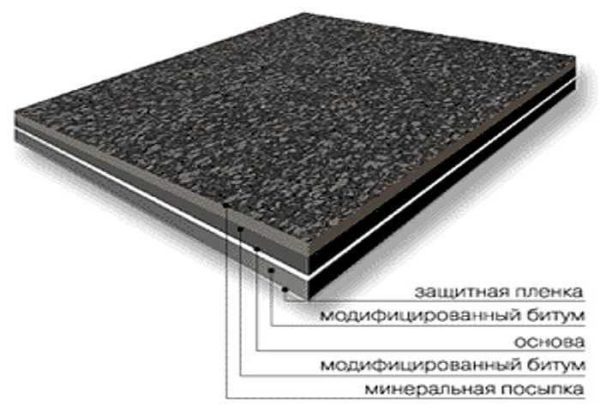
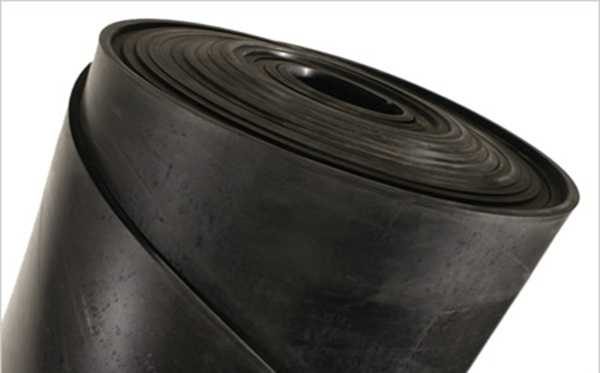
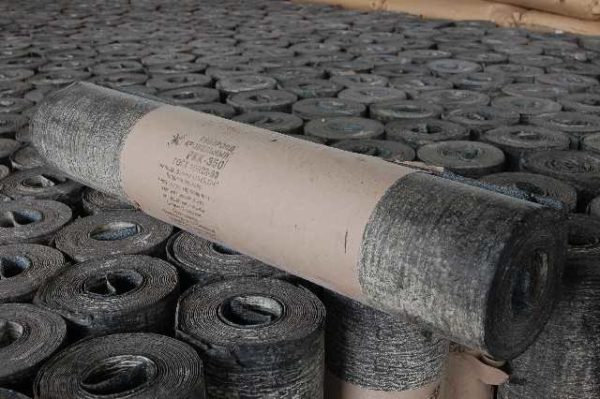
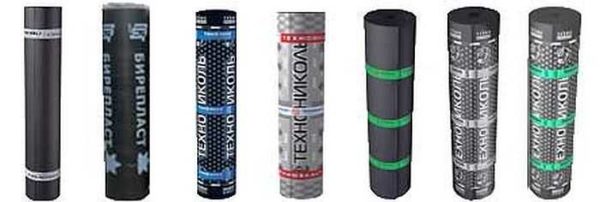
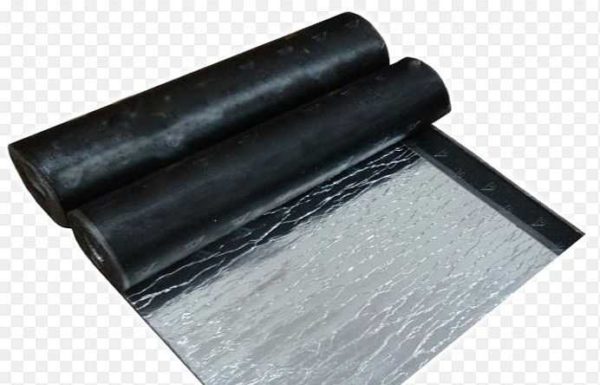

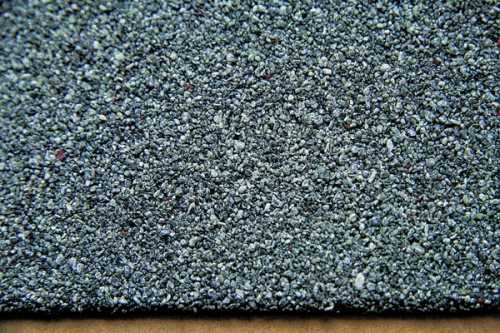
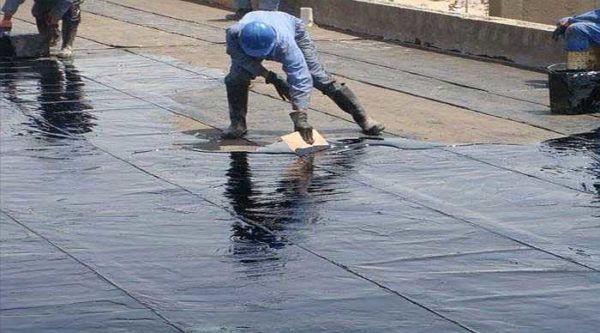
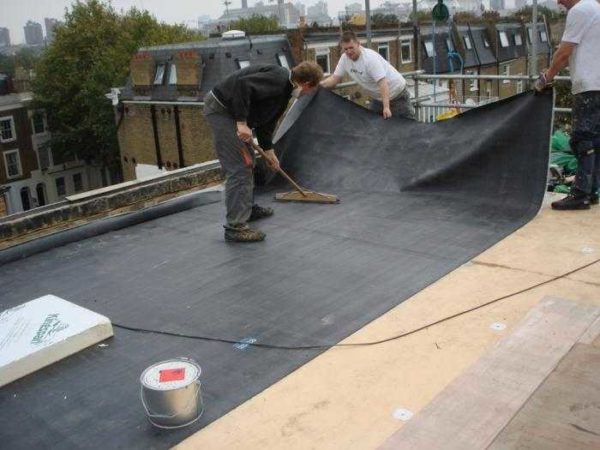
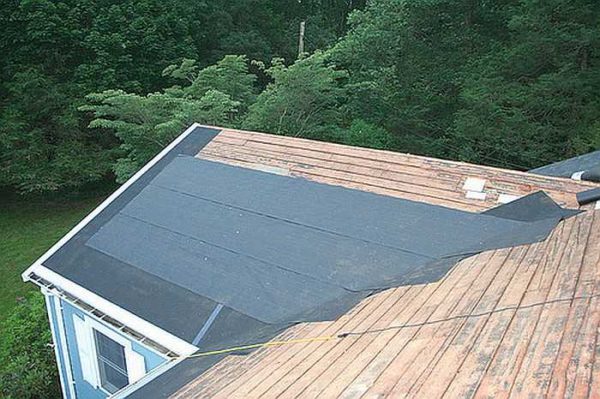
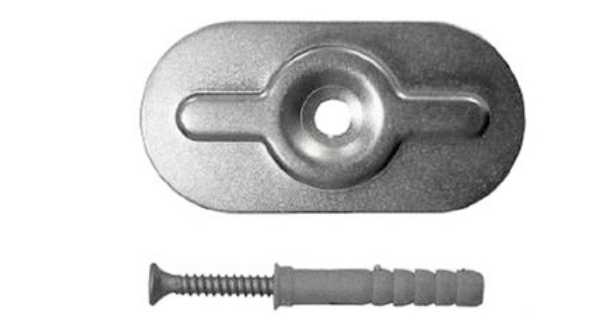
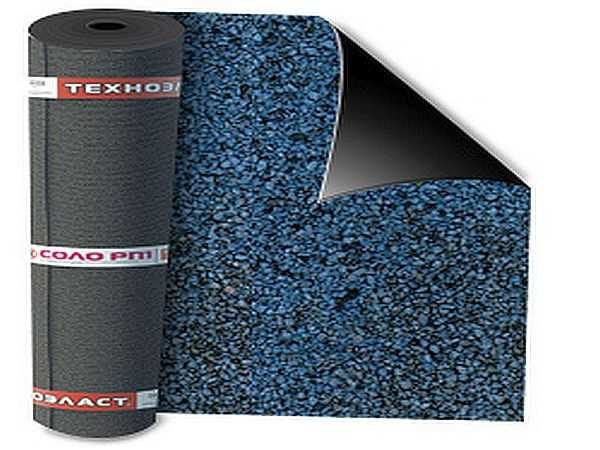

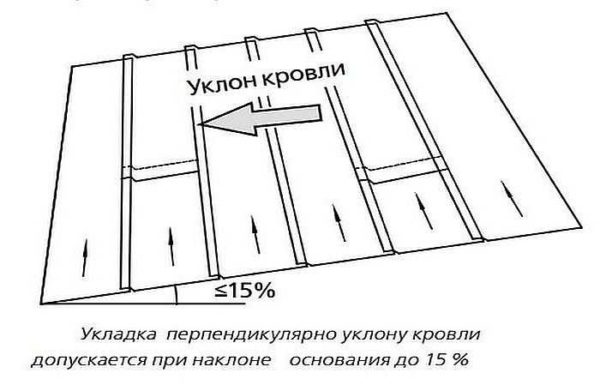
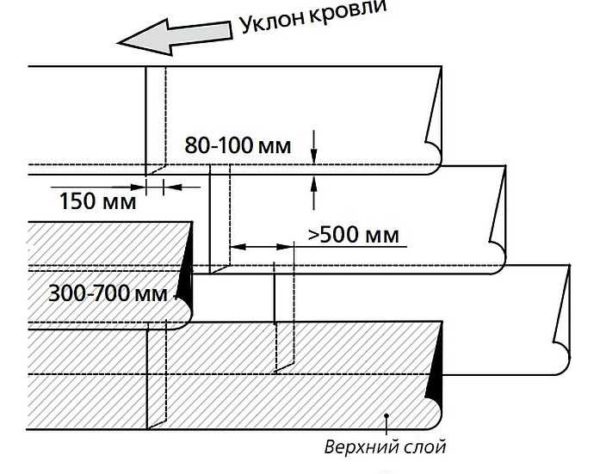
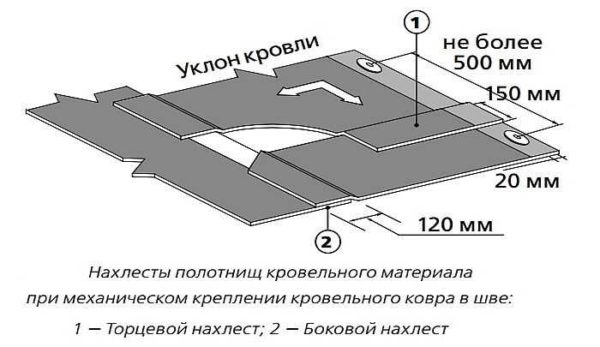
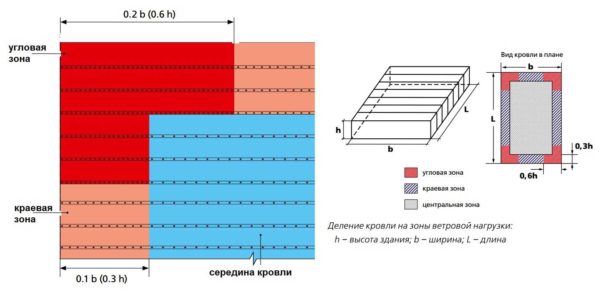
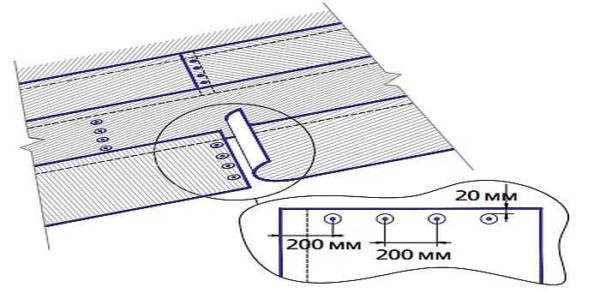
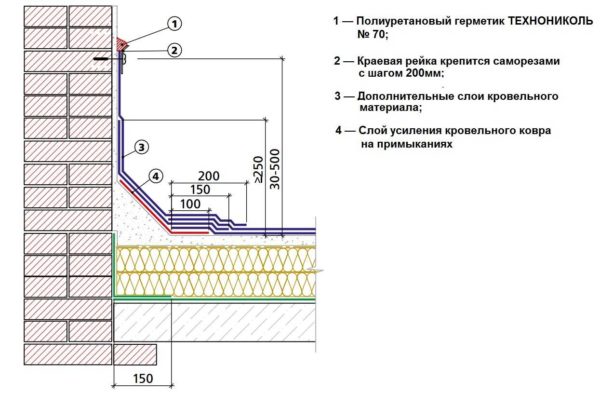
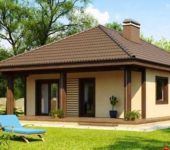

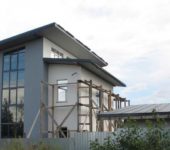
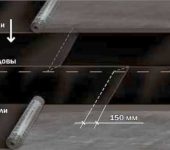
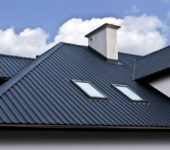





There are probably no absolutely perfect materials in nature either, but personally, when approaching the choice of a roof, I built a list of preferences for material characteristics in descending order. I made a kind of summary table for various types of materials for the roof. For me, good sound insulation, a pretentious look and a long service life are paramount. From a purely personal opinion, shingles were the best choice for my private home. There are many manufacturers of flexible shingles for every taste and color, the main thing is not to be lazy to check the material for quality before the purchase and check the relevant quality documents. I was lucky, in the city of Volzhsky, Volgograd region, near my house, there is a direct dealer of the manufacturer of flexible tiles, soft-roofing.su The sixth year since I made the roof, the house is quiet, dry and, the appearance of a house with a roof made of flexible tiles is very presentable.